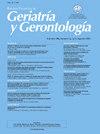评估老年患者的三羧基麦芽糖给药:临床结果,不同护理环境的比较特征和成本分析。一项为期五年的研究
Q3 Medicine
引用次数: 0
摘要
背景与目的缺铁性贫血在老年人中普遍存在,羧麦芽糖铁越来越多地用于静脉补铁。评估其在各种护理环境中的安全性、有效性和成本影响是至关重要的。本研究评估了五年来不同护理环境的老年患者给予三羧基麦芽糖铁的临床结果、不良反应和成本效益。方法回顾性观察队列研究纳入2019年1月1日至2023年12月31日在某老年日间医院接受羧麦芽糖铁治疗的198例老年患者。收集了社会人口学、临床和实验室因素的数据以及不良反应记录。将老年日间医院的管理成本与在家中或由老年家庭住院单位在养老院管理的假设成本进行比较。结果共给药279剂羧麦芽糖铁。平均年龄87.3岁,70%为女性。治疗的主要指征为肠铁吸收不良(62.7%)。治疗总体安全,无严重不良反应;5.73%的剂量发生轻度不良反应,主要涉及动脉低或高血压。与住在家里的病人相比,住在养老院的病人表现出更高的功能依赖、虚弱和合并症。成本分析显示,由于业务和人事成本较低,由老年家庭住院单位进行管理可能节省39 353.80欧元。结论羧麦芽糖铁对老年患者安全有效,包括高衰弱和合并症患者。在家庭或养老院环境中进行这种治疗具有成本效益,可能提高可及性并降低总体医疗保健成本。本文章由计算机程序翻译,如有差异,请以英文原文为准。
Evaluating ferric carboxymaltose administration in elderly patients: Clinical outcomes, comparative characteristics in different care settings and cost analysis. A five year study
Background and objective
Iron deficiency anemia is prevalent in the elderly, with ferric carboxymaltose increasingly used for intravenous iron supplementation. Evaluating its safety, efficacy, and cost implications in various care settings is essential. This study assesses the clinical outcomes, adverse reactions, and cost-effectiveness of administering ferric carboxymaltose to elderly patients across different care settings over five years.
Methods
This retrospective observational cohort study included 198 elderly patients who received ferric carboxymaltose at a Geriatric Day Hospital from January 1, 2019, to December 31, 2023. Data on sociodemographic, clinical, and laboratory factors, along with adverse reaction records, were collected. Costs of administration at the Geriatric Day Hospital were compared with hypothetical costs if administered at home or in a nursing home by a Geriatric Home Hospitalization unit.
Results
A total of 279 doses of ferric carboxymaltose were administered. Mean age of 87.3 years, 70% women. Primary indication for treatment was intestinal iron malabsorption (62.7%). Treatment was generally safe, no severe adverse reactions; mild adverse reactions occurred in 5.73% of doses, mainly involving arterial hypo- or hypertension. Patients in nursing homes exhibited higher functional dependence, frailty, and comorbidity compared to those living at home. Cost analysis showed potential savings of €39,353.80 with administration by the Geriatric Home Hospitalization unit, attributed to lower operational and personnel costs.
Conclusions
Ferric carboxymaltose is safe and effective for elderly patients, including those with high frailty and comorbidity. Administering this treatment in home or nursing home settings is cost-effective, potentially enhancing accessibility and reducing overall healthcare costs.
求助全文
通过发布文献求助,成功后即可免费获取论文全文。
去求助
来源期刊

Revista Espanola de Geriatria y Gerontologia
Medicine-Medicine (miscellaneous)
CiteScore
1.90
自引率
0.00%
发文量
62
审稿时长
85 days
期刊介绍:
Una revista de gran prestigio por sus artículos originales de investigación y revisiones. Permite cubrir todas las áreas de la medicina pero siempre desde la atención al paciente anciano, y está presente en los más reconocidos índices internacionales.
 求助内容:
求助内容: 应助结果提醒方式:
应助结果提醒方式:


